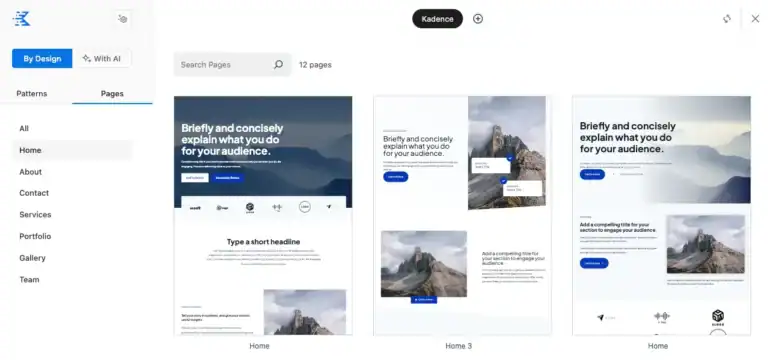There are no quick and easy responses to the questions around website cost if you’re focused on quality, especially if you view your website as an investment. Questions to ask include:
- Where are you going to host it?
- What do you want on the website?
- How many pages of static content and dynamic content do you have?
- Do you need e-commerce features?
- Who will maintain your site?
- How do you want to integrate social media?
There are potentially hundreds of other considerations to add!
Here are two questions every web designer hears at some point.
- 1 If I can get a site from Fiverr or Wix or Squarespace for $100 or less, why does any website cost more?
- 2 My friend does my site for free. Why should a website cost anything?
- 3 But I really like the ease-of-use of drag-and-drop website services. Why should I not use them?
- 4 What about going overseas for design talent?
- 5 The Real Work of Website Design
- 6 Don’t forget these maintenance tasks, too!
- 7 Conclusion
If I can get a site from Fiverr or Wix or Squarespace for $100 or less, why does any website cost more?
Bottom Line: A site from Fiverr is usually a template that the “designer” buys from a template marketplace for a fraction of what he/she charges you. Wix and Squarespace aren’t much of an improvement.
We hear this all the time. Fiverr has people you can pay to do websites for much, much less than what you’d pay an agency. Wix and Squarespace have thousands of ready-made templates. So why shouldn’t you go for a Fiverr, Wix, or Squarespace site?
Because your business is worth way more than a $100 website.
With a cheap design, you literally get what you pay for…and nothing more. It’s a low business value transaction. But is that the best value for your business?
Think of it this way. Let’s say you need a new suit or dress for job interviews. And let’s say you work in a field like fashion, where “dressing to impress” is the only way to get your foot in the door. Are you going to run down to “Big Bob’s Discount Thrift Store” or even Walmart and grab whatever will fit you off the rack?
Well, you could, yes. And you’d save a ton of money. But what will you get? Cheap thrift store or big box store clothing that may be completely out of style or of poor quality. Worse, you could run into someone else at the interview who had the same idea and *gasp* is wearing the exact same clothing!
If what you look like is a big part of getting the job you want, then you’re going to do whatever is in your power to stand out and be noticed (in a good way) for the clothing choices you made before arriving at that fashion job interview.
The same goes for websites. But there’s more to it than look and feel. A high-quality website must be tailored to load quickly, be responsive on a large number of screen sizes (not just three), have good potential for good SEO, not be a potentially insecure and malware-infected or poorly supported theme, and a number of other factors. These are things that $100 website designers and drag-and-drop site hosts simply won’t provide at that price. They may get you close on a couple of things, but ultimately they’re putting in less than $100 of effort and knowledge into your design in order to be profitable on their end.
For that reason, profitability, a $100 designer or drag-and-drop company is not going to spend a lot of time chatting with you about your business goals.
They aren’t going to make suggestions about opportunities or where you may be sabotaging future successes.
They won’t advise you on the most current ways to collect and manage data from contact forms, set up a better email and collaboration suite, display eCommerce store products, and other “back-office” online processes that can quickly overwhelm even savvy entrepreneurs.
It’s not just about the money. It’s about business value.
One hundred dollar designers don’t partner with you.
My friend does my site for free. Why should a website cost anything?
Bottom Line: Free is not always good, responsive, or thorough. Maintenance can be a time drain, even when “free”. You’ll get better quality when you pay for better quality.
 Doing sites for free is fun. You feel great giving something to someone who can’t do it for themselves. What often happens, in any “work for free” situation, is burnout. Bills have to be paid. Kids have to be driven to school and activities, and spouses and pets feel neglected. Ask a designer or webmaster whether she would rather have the money or the warm-fuzzies, and most will eventually say they want some compensation for their time and effort.
Doing sites for free is fun. You feel great giving something to someone who can’t do it for themselves. What often happens, in any “work for free” situation, is burnout. Bills have to be paid. Kids have to be driven to school and activities, and spouses and pets feel neglected. Ask a designer or webmaster whether she would rather have the money or the warm-fuzzies, and most will eventually say they want some compensation for their time and effort.
When burnout happens, and the priorities change, quality and timeliness of new content suffer. There is less incentive for your friend to do “just two more changes” when her schedule conflicts with yours.
A few of our clients have come to us when this situation develops. They recognize that while the “free” arrangement worked for getting the site running, it quickly fell apart when the site needed updates, a facelift, or a hosting change. They just want things simple and for the site to be fresh with quality content. Paying for that privilege suddenly looks very appealing vs. waiting and hoping a friend can get around to it.
But I really like the ease-of-use of drag-and-drop website services. Why should I not use them?
Drag-and-drop website creation services make it easy for anyone to build a website from beautiful templates.
But, there are hidden costs of using these services.
As your business grows and you require more features than they can provide, you will have trouble migrating your site to something better.
Drag-and-drop services don’t give the specialized support and service that a designer or agency will give you. If you decide to use a drag-and-drop service, you limit the potential of your site to react quickly to technological innovations.
They also tend to have small print in their terms of service that remove your rights as the content owner.
What about going overseas for design talent?
Obviously, website cost is going to be higher in the U.S. because of the higher cost of living. Web designers in the U.S. have to eat and live somewhere just like anyone else. It seems wise to some business owners to go overseas for web development talent where the cost of living is lower. It follows that website development costs are lower.
The problems of using overseas designers and developers
The main problem with hiring overseas website designers and developers for U.S.-based businesses is that of quality. Our experience with clients who have been hiring from overseas has not been a positive one in 9 out of 10 cases.
Quality and Coordination Problems
Spelling errors, problems with content having inappropriate phrasings and idioms, and issues with coordinating project schedules over multiple time zones plague most overseas web development projects.
Locality-based Misunderstandings
One might say, “Aren’t all vendors essentially deserving of the same consideration in the bidding process regardless of location or culture or language?”. In an ideal world, we definitely agree!
Think of it this way: If you run a group of real estate agencies in the U.S. and you need a web design that reflects the localities each agency serves, and you need the content to match the flavor of those areas, who is going to know better how to do that? An offshore website production firm or one in the U.S.?
You would have the same problem if a U.S.-based designer tried to build a website for an overseas firm. Unless the U.S.-based firm has someone on staff who knows the overseas markets well, there is too much room for misunderstandings, assumptions, and cultural-incorrectness to occur.
Yes, we all want to be part of a global economy when it comes to giving equal opportunity to a variety of vendors in a free market. The reality is often at odds with that feeling. In the end, you must make a decision about your website vendors that meshes well with your core customer or you risk losing business.
The Solution to the Overseas Talent Dilemma
The solution is not as simple as hiring only locally. We know because we’ve tried. For complex projects, where there are just as many talented people outside the U.S. as in, it is hard to justify a higher website cost based on geography alone.
And, even with all the problems described above, sometimes the person you need to work with used to live in the U.S. but is now taking advantage of the untethered lifestyle of an online profession. Your preferred website designer is traveling the globe, designing sites from coffee shops to pay her bills. That awesome PHP programmer is now an expatriate living in Ecuador to enjoy a more affordable economy. The wicked-smart e-commerce platform expert just moved to Australia to get married and make a new home there.
It’s a new trend and we can’t fight it. We can only work with it. What designers and agencies can do is manage it for you. A good agency, no matter where it finds talent, will seek only the best, the brightest, and the most capable. The agency should help you avoid all the pitfalls that come with working across time zones. They should navigate the cultural and linguistic barriers on your behalf.
The Real Work of Website Design
When considering website cost, there is a LOT of work that goes into a quality website. Here are just a few.
- New website design or old website redesign process
- Photoshop website design tasks once the design has been finalized
- Mobile-responsive coding
- E-commerce setup
- Third-party software and WordPress plugin setup and customization
- Custom theme, software, and plugin development
- Hosting
- Social media content production (blogs, Twitter, Facebook, Pinterest, Instagram, etc.) and optimization (OpenGraph)
- Google analytics setup
- Online advertising design, setup, analytics, and recommendations
- Technical support and training
Don’t forget these maintenance tasks, too!
A healthy website, both in terms of performance and gaining traffic regularly, is one whose owner pays attention to it and adds new content regularly. There are so many moving parts that go into a successful web presence. All of those things can increase website cost. Website management includes:
- Regular backups
- Update CMS software and plugins
- Installation of patches and security fixes
- Database maintenance
- Test functionality on all devices and browsers
- Testing and troubleshooting page load speed
- Search engine optimization (SEO)
- Updating content at least weekly, if not daily
- Product listing maintenance
- eCommerce programming
- Payment gateway integration
- Media file uploads and linking
- Clear out and redirect old pages and media
- Adding new features and content sections
- Moderating discussion forums
- Set up and monitor new analytics reports for new situations
- Ensure domain names don’t expire
Feeling overwhelmed yet? That’s why you need to hire a designer or agency.
Conclusion
Websites are free! Well, the ones you build yourself are “free”, or very close to it. That’s in terms of the setup costs of cut-rate hosting with low-cost providers’ least expensive plans, then using their free web building tools with a free template and free widgets and free plugins and free apps that come with them.
What’s not free is the cost of your own time in trying to deal with all of that and run your business.
Professionally-designed website cost will vary depending on where you go for web design talent. We’re happy to point you to a third-party article about website development costs. There’s also Chris Lema’s “How much should a website cost?” analysis. And, check out “Cost of Building a Website: Estimation based on Top 400 UpWork Freelancers” which is based on a market survey of real, working website freelancers. You may also want to know how much digital agencies charge for web design in 2019.
We show you these so that we’re being upfront and honest about the true “website cost”…we prefer the term website investment…of professional design and development. As you can see from their explanations if you want a high-quality website or a highly-customized website you will need to plan your budget accordingly. Just remember…
The disappointment of a bad website lingers long after the happiness of a low price is forgotten.






